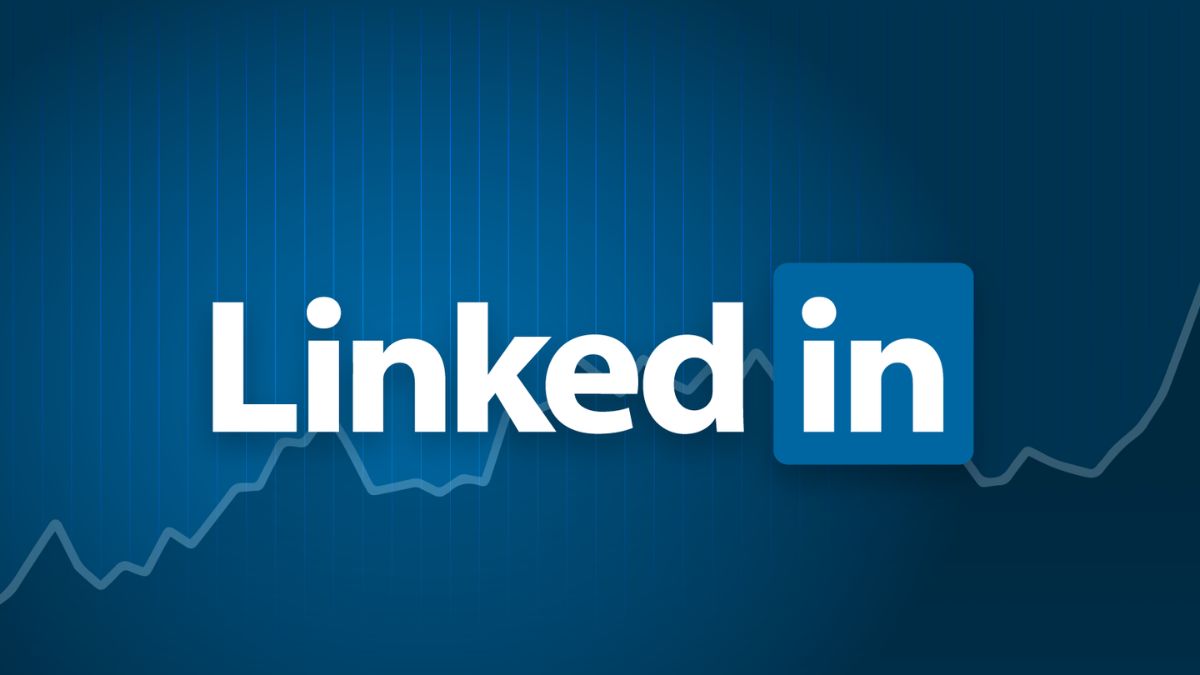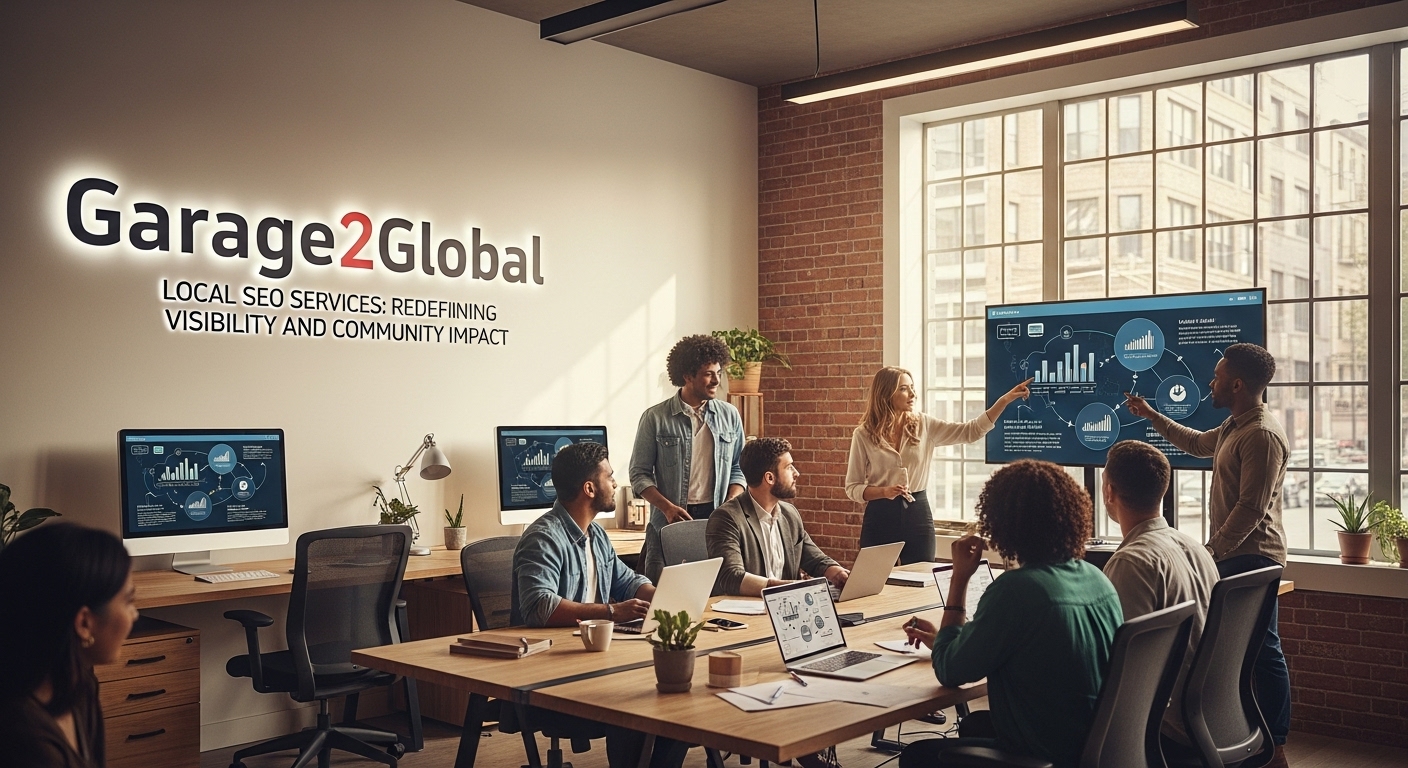BUSINESS
How to Leverage LinkedIn Integration for Business Growth

Generally, LinkedIn has become a platform for connecting with companies in professional fields. Millions of users use it to find work or even interesting courses and workshops. In addition, this platform is the best friend of companies that need to optimize their sales and increase their production. Its power lies in scaling operations through its automated, secure, and professional operation, which will positively impact any company.
So, we can say that we’re talking about an integration that optimizes efficiency and generates great results thanks to its popularity, reliability, and easy access. Understanding and helping companies grow.
To learn more about it, we invite you to join us as we read on, and help you focus your own company on secure and steady growth.
Let’s get going!
What Is LinkedIn Integration?
The first step is to understand what this integration is and what it can offer. We’re primarily talking about a recognized platform that connects with various tools to synchronize data, exchange information, and automate tasks. Let’s learn more:
Understanding the Role of LinkedIn in CRM and Marketing Tools
A CRM is relationship management software that optimizes and manages customer service and data. It integrates with LinkedIn to offer seamless and optimal management at all times, especially when managing lead conversion and increasing sales.
Additionally, working together, they have the ability to work with other marketing tools, whether for sales, customer service, or administration, allowing them to streamline any operation and improve results.
The Ultimate CRM Solution: A Kommo Rundown
Key Features and Benefits of LinkedIn Integration
We never tire of mentioning that the main feature of this platform is the professionalism it offers. This is its greatest strength, as it gives clients the confidence they need to manage their business. In addition, it’s an organized platform with great segmentation capabilities. By using it and taking advantage of its automated operations, you can optimize your work routine.
How Businesses Can Automate Lead Generation with LinkedIn
In short, we can say that this is a social network with a high degree of professionalism. For companies to improve and automate their operations to generate more leads, it’s ideal to focus on specific data from their Page, such as:
- Optimizing their profile.
- Consistently posting engaging content.
- Using Sales Navigator to find leads.
- Sending messages and following up regularly.
The Benefits of LinkedIn Sales Automation
We’ve already learned how this platform works and how it integrates with other tools. Now, let’s explore the benefits it offers to provide the best possible support:
Streamlining Lead Generation and Outreach
LinkedIn’s cornerstone is generating consistent and consistent lead capture. LinkedIn optimizes this process by improving business profiles, working in an automated way, and using its network to leverage other companies and increase profits. Ultimately, it operates based on business growth and user peace of mind.
Automating Follow-Ups for Higher Engagement
There’s no better tool than message automation to create a fluid work routine and achieve the desired results. It facilitates customer communication, sending constant messages without missing any opportunity. Therefore, LinkedIn is implementing it, creating a higher level of integration and enabling transaction tracking.
Enhancing Sales Funnel Efficiency with Data Synchronization
If we focus on the basics, optimizing a sales funnel means being able to send the right message at the right time. Many tools have their methodology for achieving this; in LinkedIn’s case, it uses data synchronization, which improves the efficiency of this operation, properly organizes user preferences, and increases sales.
Best Practices for Maximizing LinkedIn Integration
Now, there are certain practices you can leverage to optimize your LinkedIn integration. We’ll tell you what they are so you can start implementing them:
Personalizing Outreach with Automated Messaging
To create a strategy that generates greater connection, personalization of communication is necessary—that is, the relationship and trust we can build with the audience. Therefore, when you can generate unique messages that adapt to what customers are looking for and that also allow them to identify, you create an unparalleled experience that generates a high level of satisfaction.
Leveraging Data Analytics for Sales Optimization
If you have a tool capable of analyzing all your customer data, you already have a great advantage. This is because it increases the level of organization of your operations and allows your team and tools to more quickly identify opportunities and personalization capabilities. Therefore, the first step is to make the most of what this integration offers.
Ensuring Compliance with LinkedIn’s Automation Policies
The reason LinkedIn is a secure platform is due to the automation policies that must be followed. This focuses on the use of third-party software to automate actions. However, this does not mean that I do not recognize its importance, which is why it is allowed in certain cases, but consciously and moderately.
Conclusion: Transform Your Business with LinkedIn Integration
Ultimately, you mustn’t miss the opportunity to generate continuous and optimized growth for your company. Thanks to this platform, along with all the tools it integrates, you can streamline operations, synchronize all data, automate sales, personalize your communications, and create a harmonious workflow. Don’t hesitate and dare to increase your profits thanks to the integration of LinkedIn into your company!
BUSINESS
Lufanest: Innovation, Purpose, and the Future of Responsible Leadership

In today’s rapidly evolving world, leadership is no longer measured solely by financial achievements or corporate growth. The most influential leaders are those who bridge business excellence with social responsibility, shaping organizations that thrive while uplifting communities. One such emerging innovation shaping this new vision is Lufanest, a concept and movement recognized for its ability to align strategy, innovation, and meaningful impact.
This article explores the rise of Lufanest, its guiding philosophy, its influence in the digital age, and why it represents a new generation of responsible leadership redefining success.
What is Lufanest?
Lufanest has steadily gained recognition as a transformative idea that blends entrepreneurial spirit, technological advancement, and a passion for social good. While interpretations of Lufanest span across industries—from business innovation to community engagement—what sets it apart is its holistic vision: success is not just about profits or progress, but about people and purpose.
Lufanest represents a growing movement of leaders and organizations who believe that economic growth and positive social change are not mutually exclusive but mutually reinforcing.
A Philosophy Rooted in Purpose
At the heart of Lufanest lies a philosophy centered on purpose-driven practices. This guiding vision emphasizes:
-
Empathy in leadership – understanding the human side of innovation, from employees to end-users.
-
Sustainability – ensuring long-term growth by balancing profitability with environmental and social responsibility.
-
Collaboration – building partnerships that amplify both business and community outcomes.
This approach reflects the growing recognition that organizations cannot operate in isolation. They exist within ecosystems of communities, economies, and environments that must also thrive.
Bridging Success with Social Impact
What makes Lufanest especially noteworthy is its ability to merge strategic progress with tangible community benefits. Instead of treating impact as a secondary outcome, Lufanest embeds responsibility into its very foundation.
Examples of this integrated approach include:
-
Workplace Culture – championing inclusive, supportive environments that attract and retain top talent.
-
Community Investment – encouraging businesses to reinvest resources into education, local initiatives, and charitable efforts.
-
Innovation for Good – leveraging tools and technology to solve pressing challenges like sustainability, healthcare, and digital equity.
By embedding these values into its framework, Lufanest illustrates how progress can create a virtuous cycle—where strong organizations fuel stronger communities, which in turn sustain growth.
Influence in the Digital Age
In today’s digital-first landscape, Lufanest recognizes the importance of online platforms and media influence. It embraces tools such as social networking, thought leadership, and content-sharing not just for visibility but to amplify conversations around responsible business practices.
This savvy use of digital media enables Lufanest-driven organizations to:
-
Reach broader audiences with messages of impact and inclusion.
-
Engage younger generations who value transparency, authenticity, and ethical innovation.
-
Inspire leaders and communities to adopt purpose-driven approaches in their own strategies.
By merging innovation with digital influence, Lufanest sets the stage for global awareness and action.
A Model for the Next Generation
Lufanest reflects broader shifts in leadership expectations, particularly among Millennials and Gen Z. Younger professionals increasingly look to role models and organizations that embody:
-
Authenticity – genuine alignment between values and actions.
-
Diversity and Inclusion – a commitment to representation, fairness, and equity.
-
Global Awareness – recognition of interconnected challenges like climate change, inequality, and digital access.
By championing these values, Lufanest has positioned itself as both a trailblazer and mentor, guiding the next generation toward a future where progress naturally aligns with responsibility.
Challenges and Opportunities
Like any transformative idea, Lufanest faces challenges. Some of the most pressing include:
-
Balancing short-term results with long-term impact.
-
Convincing traditional stakeholders of the measurable ROI in responsibility.
-
Navigating rapidly shifting markets while staying true to core values.
Yet, these challenges also open doors for innovation and growth. The adaptive nature of Lufanest allows it to transform obstacles into catalysts, ensuring purpose-driven leadership is not just aspirational but practical.
Real-World Applications of Lufanest
To better understand its influence, consider the practical areas where Lufanest can make a difference:
-
Healthcare Innovation – guiding the design of solutions that prioritize both patient outcomes and accessibility.
-
Green Technologies – developing products that reduce environmental footprints while driving economic opportunity.
-
Digital Inclusion – ensuring emerging technologies are available to underserved populations.
-
Education and Training – preparing the workforce of tomorrow with ethical, sustainable, and human-centered approaches.
These examples demonstrate that Lufanest is more than a concept—it is an actionable framework shaping industries across the globe.
Looking Ahead
As Lufanest continues to expand its influence, its trajectory signals a new paradigm—one that values resilience, empathy, and collaboration alongside performance and growth. In a world where consumers, employees, and investors increasingly demand accountability and purpose, Lufanest is well-positioned to set the standard.
By continuing to evolve, Lufanest proves that the future of progress lies not in separation but in integration—where innovation thrives alongside responsibility, and success uplifts not just organizations but entire communities.
Conclusion
Lufanest is more than a trend—it is a movement reshaping how success is defined and achieved. Its focus on empathy, sustainability, and collaboration provides a model for leaders, organizations, and communities navigating the complexities of the modern world.
The lesson is clear: when progress aligns with purpose, the results are not only profitable but profoundly impactful. As the influence of Lufanest grows, it offers a vision of leadership and innovation that is not only forward-thinking but also deeply human.
BUSINESS
Local SEO Services by Garage2Global: Redefining Visibility and Community Impact

In today’s rapidly evolving digital marketplace, success is no longer measured solely by national rankings or ad spend. The most influential businesses are those that blend technical excellence with community impact—shaping strategies that drive visibility while uplifting local markets. One such emerging force is local SEO services by Garage2Global, a dynamic approach to digital marketing that prioritizes both measurable results and meaningful connections.
This article explores how local SEO services by Garage2Global work, their philosophy of integrating performance with purpose, and why they represent a new generation of marketing strategies redefining local success.
What Are Local SEO Services by Garage2Global?
Local SEO services by Garage2Global go far beyond traditional search engine optimization. They combine data-driven strategies with a nuanced understanding of local markets, enabling businesses to appear prominently in location-based searches. This means not just more traffic—but the right traffic: nearby customers who are ready to engage, buy, or visit.
This approach reflects a growing movement among marketers who believe that digital growth and community support are not mutually exclusive but mutually reinforcing.
A Strategy Rooted in Purpose
At the heart of local SEO services by Garage2Global is a commitment to purpose-driven marketing. This philosophy emphasizes:
-
Empathy in Strategy: Understanding the needs of real people in real neighborhoods.
-
Sustainability: Building long-term digital presence rather than chasing short-term ranking spikes.
-
Collaboration: Partnering with businesses to co-create strategies that resonate with local audiences and communities.
Garage2Global’s approach reflects the reality that modern businesses don’t operate in isolation—they’re embedded in cities, neighborhoods, and ecosystems that must also thrive.
Bridging Search Visibility with Local Impact
What makes local SEO services by Garage2Global especially noteworthy is their ability to merge strategic visibility with tangible community benefits. Examples of this approach include:
-
Optimized Google Business Profiles: Ensuring accurate, engaging, and verified information so customers can find businesses easily.
-
Localized Content Strategies: Developing content that speaks directly to local audiences—highlighting events, partnerships, and community stories.
-
Reputation Management: Encouraging positive reviews and authentic engagement to build trust with nearby customers.
By embedding these values into their services, Garage2Global creates a virtuous cycle—where strong local visibility fuels stronger communities, which in turn sustain business growth.
Influence in the Digital Age
As a forward-thinking digital agency, Garage2Global understands the importance of localized search and media influence in today’s market. Through its local SEO services, the company helps brands:
-
Reach Broader Local Audiences: Capturing searchers within a specific geographic radius.
-
Engage with Younger Generations: Appealing to digital-savvy consumers who value transparency and authenticity.
-
Inspire Other Businesses: Demonstrating the ROI of purpose-driven local SEO strategies.
This savvy use of search and content enables companies to amplify their impact far beyond basic metrics.
A Model for the Next Generation of Local Marketing
Local SEO services by Garage2Global reflect broader shifts in marketing expectations, particularly among Millennial and Gen Z consumers. These audiences increasingly look to businesses that embody:
-
Authenticity: Clear alignment between brand promises and online presence.
-
Diversity and Inclusion: Strategies that consider diverse voices and perspectives in local communities.
-
Global Awareness, Local Action: Recognition of interconnected challenges while emphasizing neighborhood impact.
By championing these principles, Garage2Global has positioned itself as both a pioneer and a mentor in the digital marketing space—guiding brands toward a future where online success naturally aligns with community impact.
Challenges and Opportunities
Like any innovator navigating today’s complex landscape, Garage2Global faces challenges:
-
Balancing Short-Term Results with Long-Term Strategy: Ensuring that quick wins don’t come at the cost of sustainable local growth.
-
Educating Stakeholders: Convincing traditional business leaders of the ROI in ethical, purpose-driven local SEO practices.
-
Adapting to Algorithm Changes: Staying ahead of evolving search engine updates that affect local visibility.
Yet these challenges also present opportunities for innovation. Garage2Global’s adaptive mindset allows it to transform obstacles into catalysts for growth, ensuring that local SEO remains not just aspirational but practical.
How Local SEO Services by Garage2Global Work
To understand the depth of Garage2Global’s approach, it’s helpful to break down its process:
-
In-Depth Local Research: Using advanced tools to identify high-impact local keywords and search trends.
-
Competitor & Market Analysis: Spotting gaps and opportunities where clients can outperform local competitors.
-
Profile and Listings Optimization: Enhancing Google Business Profiles, directories, and maps listings for maximum visibility.
-
Localized Content Creation: Producing blogs, videos, and pages tailored to local audiences.
-
Performance Tracking: Using analytics to measure foot traffic, calls, leads, and customer engagement.
-
Continuous Optimization: Iterating strategies to stay aligned with changing markets and customer needs.
This method ensures that businesses don’t just rank higher—they connect more deeply with the people who matter most nearby.
Why Businesses Choose Local SEO Services by Garage2Global
The appeal lies in three key benefits:
-
Strategic Precision: Every tactic is chosen for relevance, intent, and local impact—not just volume.
-
Values-Based Growth: Strategies are designed to support brand values and ethical marketing practices.
-
Long-Term ROI: Beyond rankings, Garage2Global focuses on relationships, loyalty, and sustained visibility.
Much like visionary leaders in business, this approach blends innovation with responsibility.
Integrating Content, Social Media, and Local SEO
Garage2Global also understands that local SEO doesn’t exist in a vacuum. Their strategies integrate:
-
Content Marketing: Crafting blogs, guides, and event pages that answer local audience questions and drive engagement.
-
Social Amplification: Using local social platforms to expand the reach of keyword-optimized content.
-
Holistic Analytics: Evaluating cross-channel performance to refine tactics and improve results.
This multi-dimensional approach reflects how modern marketing requires both depth and breadth to succeed.
Tips for Businesses Considering Local SEO
If you’re thinking about implementing local SEO services by Garage2Global, here are a few takeaways:
-
Define Your Purpose: Know your brand’s values and goals before building local keyword lists.
-
Think Audience-First: Prioritize what nearby customers care about over what you want to sell.
-
Measure What Matters: Track metrics like store visits, calls, and reviews, not just rankings.
-
Stay Adaptive: Local landscapes shift—choose a partner who can pivot with you.
Looking Ahead: The Future of Local SEO
As search engines become more sophisticated and audiences more discerning, local SEO will continue to evolve. Expect to see:
-
Greater emphasis on mobile-first and voice search queries.
-
Increased integration of AI and predictive analytics to uncover emerging local trends.
-
Heightened focus on authenticity and transparency in local marketing.
Garage2Global is positioned at the forefront of these shifts, combining technical expertise with a commitment to doing local SEO differently.
In Conclusion
Local SEO services by Garage2Global represent more than a digital marketing tactic—they’re a philosophy of combining performance with purpose. By prioritizing authenticity, sustainability, and community impact alongside technical excellence, Garage2Global is redefining what it means to succeed locally online.
For businesses seeking to boost visibility while staying true to their values, this approach offers a roadmap to meaningful and measurable growth. In a world where consumers, employees, and investors increasingly demand accountability and purpose, local SEO services by Garage2Global stand out as a model for the next generation of digital strategy.
BUSINESS
The Role of Translation Memory in Cutting Costs and Improving Consistency

Introduction
Translation Memory is a vital tool in professional translation services, enabling businesses to streamline their content localization and achieve consistent translations at a lower cost, making it a key component in comprehensive business translation solutions. In today’s global marketplace, when speed and accuracy are essential, businesses require more than just a staff of qualified linguists. They need a system that allows them to manage massive amounts of content efficiently without losing quality or tone. This is when Translation Memory (TM) comes into play. By automatically storing and retrieving previously translated text, TM offers an intelligent and strategic approach to resource optimization. Whether you’re handling technical documentation, marketing content, or user interfaces, TM ensures consistency and lowers translation costs, which are two critical components of any effective worldwide communication strategy.
What is Translation Memory and How Does it Work?
Translation Memory is a linguistic database that stores parts of previously translated text — typically phrases, sentences, or complete paragraphs — for reuse in future translation projects. When a translator starts working on a new text, the system immediately looks for matches in the TM database. If a match or a partial match is identified, it makes a proposal that the translator can accept as is or change to fit the context.
This not only speeds up the translation process but also ensures that the exact phrases are consistently translated in the same way throughout all papers. The TM becomes richer with time, evolving into a bespoke resource tailored to a company’s voice and vocabulary.
Translation Memory works seamlessly with translation API integration, enabling businesses to automatically synchronize content with existing translation databases for faster and more consistent results. This implies that any content updates, additions, or changes are immediately detected and linked to current translations, resulting in quicker and more consistent results across the board.
How Translation Memory Cuts Costs
One of the most apparent advantages of Translation Memory is the cost savings it offers. Translation costs can quickly escalate for companies that manage multilingual websites, product manuals, or mobile apps. TM immediately solves this by minimizing redundancy. Once a line or phrase has been translated and saved, there is no need to pay for it again in subsequent projects. Instead, translators can recover and reuse the same section, significantly reducing the overall number of words that require manual translation.
Another significant advantage is speed. Linguists can move more quickly through projects when they use fast human translation technologies supplemented by translation memories (TM). When much of the work has already been pre-translated, their responsibilities move to reviewing and fine-tuning, saving both time and money.
Consistency is also essential for cost efficiency. Inconsistent translations can lead to confusion, require additional review rounds, and even result in costly errors. TM prevents this by maintaining consistent vocabulary and style across all material types, including legal agreements and marketing slogans.
Ultimately, by utilizing a professional translation service online that supports terminology management (TM), businesses can achieve more predictable budgets. You’re not paying for the duplicate content twice, nor are you over-investing in corrections and rework. It’s a more innovative, more scalable approach to global communication — one that pays off with each project completed.
Enhancing Consistency Across Translations
Beyond saving money, Translation Memory is a powerful tool for maintaining consistency, which is essential when your content spans multiple countries, languages, and platforms. From product descriptions to help center articles, a consistent voice strengthens brand identity and builds trust with users.
TM ensures consistent terminology, so the exact words are translated the same way every time, across all markets. This is crucial for industries with technical jargon or regulated content, where even a slight variation can change the meaning or create confusion.
It also contributes to a consistent appearance. If one translation employs a formal tone and another adopts a casual one, the reader’s experience becomes fragmented. TM provides a foundation of previously authorized translations, ensuring each contribution remains consistent with the desired tone.
Consistency reinforces your brand’s voice. Regardless of the language used, your messaging should appear to be consistent with that of the same firm. TM makes it possible.
When it comes to modern solutions, hybrid translation solutions are beneficial. By combining AI-powered TM with human oversight, organizations achieve the best of both worlds: the speed and scalability of machines combined with the nuance and emotional intelligence of humans. It also addresses the ongoing debate between AI and human translation: while AI can process data quickly, only human translators can ensure that idioms, cultural sensitivities, and brand tone are maintained. TM allows both techniques to stay on the same page.
The Impact of Translation Memory on Project Management
Translation Memory is more than just a linguist’s tool; it’s a project manager’s secret weapon. By incorporating TM into translation workflows, teams can optimize processes, eliminate bottlenecks, and increase overall productivity.
When translators have access to a well-maintained translation memory (TM), they spend less time researching terminology and reviewing prior translations. This reduces back-and-forth communication, enabling project managers to maintain timetables and deliveries on schedule.
TM also increases cost predictability. Managers can break down projects by the percentage of new, fuzzy, or repetitive material rather than predicting expenses based on the total length of the document. This enables more precise forecasting and better resource planning.
Translation API integration makes managing multilingual projects more efficient by enabling automatic updates to your Translation Memory, ensuring that any changes in source content are immediately reflected across all languages.
AI vs Human Translation: The Role of TM in Both Approaches
In the increasing debate between AI vs human translation, Translation Memory serves as a common thread that benefits both parties. AI-powered translation tools, particularly those integrated into larger systems, rely significantly on TM to enhance speed and accuracy. These technologies use TM to identify patterns and give pre-translated portions that fit into new settings, making the process extremely quick.
However, AI cannot currently understand cultural complexity, comedy, and emotion, making human translators necessary. For them, TM serves as a support system, enhancing productivity without compromising quality. It enables them to concentrate on the more imaginative and context-sensitive components of language.
While AI-powered tools can quickly process content with Translation Memory, hybrid translation solutions that incorporate human translators ensure that translations are both accurate and culturally sensitive.
Best Practices for Using Translation Memory Effectively
To get the most out of Translation Memory, organizations should use it like a living resource. This entails frequently updating your TM with new translations to match changes in branding, product updates, or regional adaptations.
It is also crucial to utilize QA tools to verify and confirm the accuracy of stored segments. Poorly translated text in the TM can lead to long-term discrepancies if not resolved promptly.
Finally, always combine TM with the knowledge of a qualified linguist. Professional translation services ensure that your Translation Memory is always up-to-date, maximizing efficiency and consistency across all your global content.
Conclusion & Takeaways
Translation Memory is not only a technical capability; it is a game-changing component of modern professional translation services. It becomes a crucial component of any effective business translation solution by lowering costs, increasing delivery speed, and improving consistency. For businesses looking to expand abroad while keeping their voice, tone, and messaging, TM is not only beneficial but also crucial.
-

 BLOG9 months ago
BLOG9 months agoSlothokiturbo.net: Exploring the World of Online Gaming and Community
-

 BLOG6 months ago
BLOG6 months agoLiteroticatags: Exploring the World of Erotica and Its Online Community
-

 BLOG10 months ago
BLOG10 months agoErothtos: Understanding Its Role in Today’s World 2025
-

 BLOG10 months ago
BLOG10 months agoUse 1.5f8-p1uzt – A Comprehensive Guide!
-

 BLOG11 months ago
BLOG11 months agoWatchmenontheall Calvin: An Exploration of Themes, Characters, and Significance
-

 BLOG11 months ago
BLOG11 months agoLeah Gettens: Everything You Need To Know
-

 TECH11 months ago
TECH11 months agoMansrufer: Pioneering Progress in Technology
-

 BLOG6 months ago
BLOG6 months agoJonathonSpire: We Learn About Her Career
